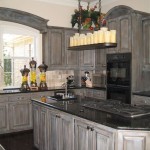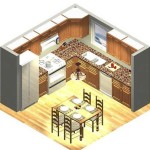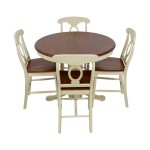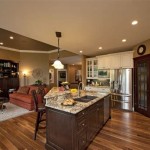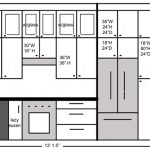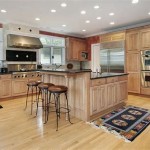```html
Kitchen Remodeling In San Diego: A Comprehensive Guide
San Diego, with its vibrant culture and diverse architecture, presents unique opportunities and challenges for kitchen remodeling projects. The city's Mediterranean climate, coupled with trends in modern design, often influence the choices homeowners make when renovating their kitchens. This article provides a comprehensive overview of kitchen remodeling in San Diego, covering key aspects such as planning, design considerations, material selection, contractor selection, and permit acquisition, all essential for a successful renovation.
Planning Your San Diego Kitchen Remodel
The initial planning stage is paramount to a smooth and efficient kitchen remodel. This phase should involve a thorough assessment of current needs, future aspirations, and budget limitations. A well-defined plan will serve as a roadmap, minimizing potential issues and ensuring the project stays on track.
One of the first steps in planning is defining the scope of the remodel. Are you aiming for a minor cosmetic update, or a complete overhaul of the kitchen layout? A minor remodel might involve replacing countertops, repainting cabinets, and updating appliances. A major remodel, on the other hand, could encompass structural changes, relocation of plumbing and electrical systems, and a complete redesign of the kitchen’s footprint.
Budgeting is another crucial aspect of the planning process. It is advisable to establish a realistic budget that accounts for materials, labor, permits, and potential unforeseen expenses. Obtaining multiple quotes from different contractors can provide a clearer understanding of the costs involved. Furthermore, a contingency fund, typically around 10-15% of the total budget, should be set aside to cover unexpected issues that may arise during the renovation process. Financing options, such as home equity loans or personal loans, should also be explored early in the planning phase.
Finally, consider the timeline for the remodel. Kitchen remodels can range from a few weeks to several months, depending on the complexity of the project. Factors that can impact the timeline include the availability of materials, the contractor's schedule, and the permit approval process. It is essential to establish a realistic timeline with your contractor and factor in potential delays.
Design Considerations for San Diego Kitchens
San Diego's unique climate and architectural styles influence kitchen design trends. Open-concept layouts, natural light, and durable materials are often prioritized. Consideration should be given to incorporating these elements while also reflecting personal style and functional needs.
The open-concept design is particularly popular in San Diego homes, as it maximizes space and allows for seamless integration with living and dining areas. This design approach often involves removing walls to create a larger, more communal space. However, it is important to consider the structural implications of removing walls and to consult with a structural engineer to ensure the integrity of the building.
Maximizing natural light is another key design consideration. Large windows, skylights, and glass doors can flood the kitchen with sunlight, creating a bright and airy atmosphere. Furthermore, strategically placed lighting fixtures can supplement natural light and create different moods within the kitchen. LED lighting is a popular choice due to its energy efficiency and long lifespan.
Material selection plays a significant role in the overall design and functionality of a San Diego kitchen. Durable and weather-resistant materials are essential, given the city’s Mediterranean climate. Countertops made from granite, quartz, or stainless steel are popular choices due to their durability and aesthetic appeal. Cabinetry should be made from high-quality wood or moisture-resistant materials to withstand the coastal climate. Flooring options such as tile, hardwood, or laminate are also popular choices, depending on personal preference and budget.
In terms of style, San Diego kitchens often incorporate elements of Mediterranean, contemporary, and coastal design. Mediterranean kitchens typically feature warm colors, natural stone, and ornate details. Contemporary kitchens often embrace clean lines, minimalist aesthetics, and modern appliances. Coastal kitchens typically incorporate light colors, natural textures, and nautical-inspired accents.
Navigating Material Selection and Sourcing
Choosing the right materials is a significant aspect of kitchen remodeling. Durability, aesthetics, and budget constraints are factors to consider. Sourcing materials locally can often save time and money, while also supporting local businesses. Understanding the pros and cons of different materials is crucial for making informed decisions.
Countertops are a focal point in any kitchen, and the material selection can significantly impact the overall look and feel of the space. Granite is a popular choice due to its natural beauty, durability, and heat resistance. Quartz is another popular option, known for its durability, low maintenance, and wide range of colors and patterns. Stainless steel countertops offer a sleek and modern aesthetic, but they can be prone to scratches and dents. Laminate countertops are a more affordable option, but they are less durable and heat resistant than granite or quartz.
Cabinetry is another significant investment in a kitchen remodel. Solid wood cabinets are a classic choice, offering durability and a timeless aesthetic. However, they can be more expensive than other options. Plywood cabinets are a more affordable alternative, offering good durability and moisture resistance. Particleboard cabinets are the least expensive option, but they are also the least durable and moisture-resistant.
Flooring options can also significantly impact the overall look and feel of the kitchen. Tile is a popular choice due to its durability, water resistance, and wide range of styles and colors. Hardwood flooring offers a warm and inviting aesthetic, but it requires more maintenance and is more susceptible to water damage. Laminate flooring is a more affordable alternative to hardwood, offering good durability and water resistance. Vinyl flooring is another budget-friendly option, offering good water resistance and a wide range of styles and colors.
Sourcing materials locally can offer several advantages. Local suppliers often have a better understanding of the local climate and architectural styles, and they can provide personalized recommendations. Furthermore, sourcing materials locally can reduce transportation costs and lead times. Supporting local businesses can also contribute to the local economy.
Selecting the Right Contractor in San Diego
Choosing a reputable and experienced contractor is critical for a successful kitchen remodel. Verifying licenses, insurance, and references is essential. A clear and detailed contract should outline the scope of work, timeline, payment schedule, and warranty information. Communication is key throughout the project.
Before hiring a contractor, it is crucial to verify their license and insurance. In California, contractors are required to be licensed by the Contractors State License Board (CSLB). You can check a contractor’s license status and disciplinary history on the CSLB website. It is also important to ensure that the contractor has adequate liability insurance and workers' compensation insurance. Liability insurance protects you from financial losses if the contractor damages your property, while workers' compensation insurance protects you from liability if a worker is injured on your property.
Obtaining references from previous clients is another important step in the contractor selection process. Contacting previous clients can provide valuable insights into the contractor’s work ethic, communication skills, and ability to deliver projects on time and within budget. It is advisable to ask specific questions about the contractor’s strengths and weaknesses, and to inquire about any challenges that arose during the project and how the contractor resolved them.
A clear and detailed contract is essential for protecting your interests and ensuring that the project is completed to your satisfaction. The contract should outline the scope of work, including a detailed description of the materials and labor to be provided. It should also specify the timeline for the project, including start and completion dates. The payment schedule should be clearly defined, with milestones linked to specific deliverables. Furthermore, the contract should include a warranty clause that covers defects in materials and workmanship. It is always recommended to have a lawyer review the contract before signing it.
Communication is key throughout the kitchen remodel process. Establish clear lines of communication with your contractor and schedule regular meetings to discuss progress, address any concerns, and make any necessary adjustments to the plan. Maintaining open communication can help prevent misunderstandings and ensure that the project stays on track.
Permits and Regulations in San Diego
Most kitchen remodeling projects in San Diego require permits from the city or county. Understanding the permit requirements and navigating the application process is essential to avoid delays and potential fines. Compliance with building codes ensures the safety and structural integrity of the kitchen.
The specific permit requirements for a kitchen remodel depend on the scope of the project. Minor cosmetic updates, such as repainting cabinets or replacing countertops, may not require permits. However, major remodels that involve structural changes, plumbing alterations, or electrical work typically require permits. It is advisable to consult with the City of San Diego Development Services Department or the San Diego County Department of Planning & Development Services to determine the specific permit requirements for your project.
The permit application process typically involves submitting detailed plans and specifications for the project, along with the required application fees. The plans must comply with the California Building Code and other applicable regulations. The permit review process can take several weeks or even months, depending on the complexity of the project and the workload of the permit review staff. It is essential to factor in this time when planning your kitchen remodel.
Failure to obtain the necessary permits can result in fines, delays, and even the possibility of having to undo completed work. Furthermore, unpermitted work can create problems when you sell your home. It is therefore crucial to ensure that all necessary permits are obtained before starting any work on your kitchen remodel.
Compliance with building codes is essential for ensuring the safety and structural integrity of your kitchen. Building codes address various aspects of construction, including electrical wiring, plumbing systems, ventilation, and fire safety. It is important to work with a contractor who is familiar with the California Building Code and can ensure that your kitchen remodel complies with all applicable regulations.
```
1 Kitchen Remodel San Diego Stress Free Renovations

1 Kitchen Remodel San Diego Stress Free Renovations

Kitchen Remodel San Diego

Kitchen Remodel In San Diego Noma Design And Build

Del Mar Kitchen Remodel Lars San Diego

Kitchen Remodel San Diego

Kitchen Remodel What S It Cost San Diego Home Garden Lifestyles

Kitchen Remodeling Custom Cabinets San Diego Ca

How Long Does It Take To Remodel A Kitchen In San Diego

Kitchen Remodeling Custom Cabinets San Diego Ca


